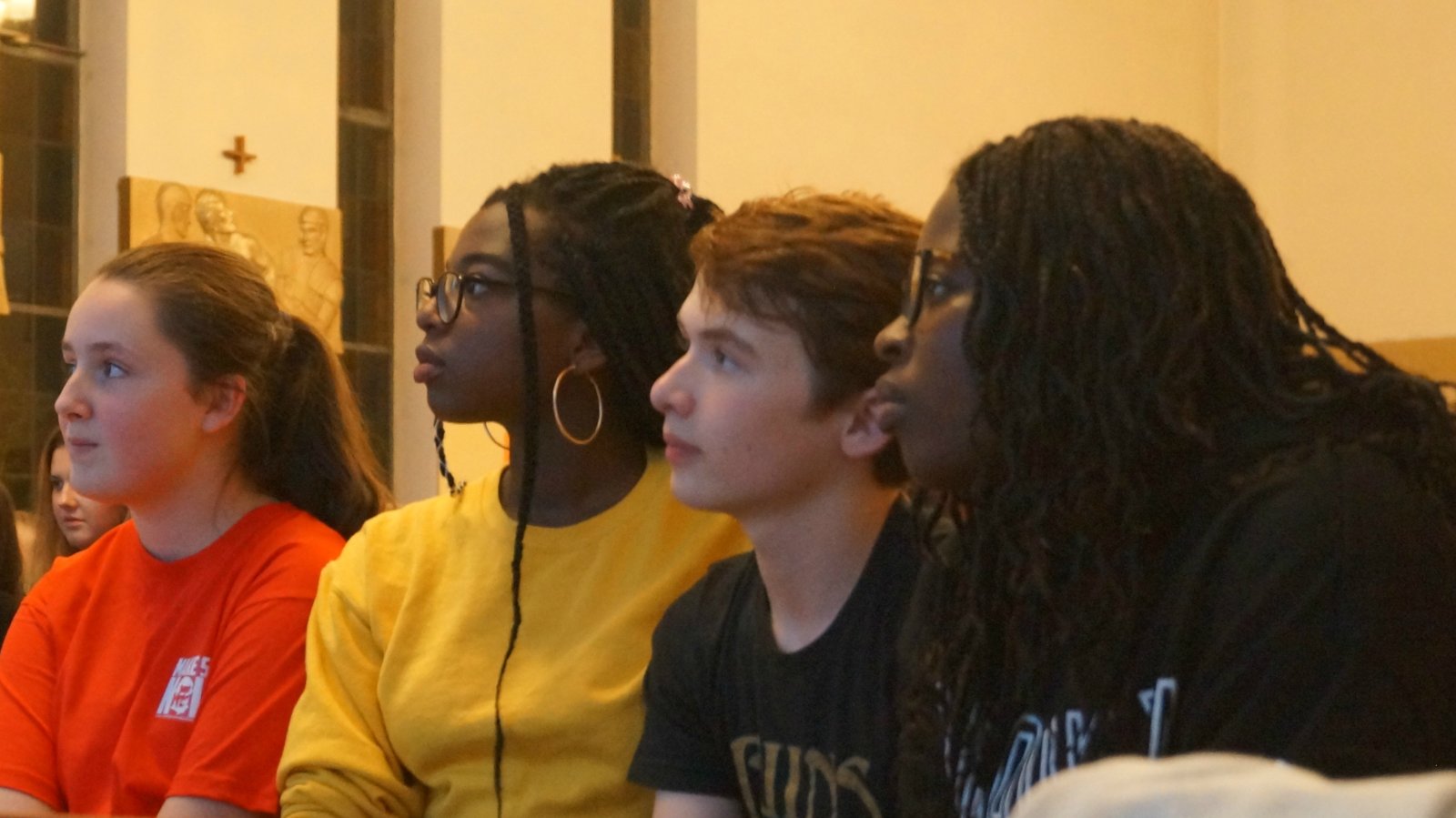Entering the Inner Room
Posted: Thu, 18 Jun 2020 09:08
Catholic teacher Michael Bennett reflects this week on helping the young find God in the silence of their own interior space. Photo: Students in the chapel at the 'Make Some Noise' Salesian Youthgather, 2018
My youngest son, Isaac, has a sharp mind, and a sharper wit! He questions everything, reflects deeply and is never quite happy to accept things as they seem to be. A number of years ago, his mum and I received a phone call from school requesting that we attend a meeting at the end of the day to speak to one of Isaac's teachers; he was 6. We dutifully attended, not knowing why we were being summoned. When we arrived, the class teacher, a lovely lady, and a younger NQT greeted us. Mum and I were made comfortable, given a hot drink and told the issue was quite sensitive. Isaac was talking in the school chapel! And, when told that he should be quiet as he was in God's House, he asked "Where is God? I can't see Him." Upon hearing this, I laughed and was kicked under the table by my wife! I duly apologised for Isaac and assured the lovely staff that I would speak to him.
Clearly, I want all children to have respect and show reverence to sacred places; my own children are no exception. Yet was an opportunity missed, even at this young age, to invite this curious mind to knock on the inner door?
In journeying with young people, the spiritual externals are vital. Chapels, statues, candles can give form to help develop the abstract realties of faith, or as Piaget would put it, to make the abstract, concrete. In the Catholic sector, we are well-skilled in developing and practising the faith through our outward signs and symbols. Yet, there comes a time when we must support our youngsters and indeed, encourage them to 'knock on the inner door', and to journey within to experience the God who speaks through silence.
In my years as Head of RE in two schools, it was our policy to encourage silence as a form of collective worship. Silence offers the youngster the daily opportunity to make an individual pilgrimage. Within these moments of silence, the young soul can sit in contemplation and wait for the Divine to speak. Silence allows God, who is ever-present, to speak. Jesus was clear to his disciples: 'When you pray, go into your room, close the door and pray to your Father, who is unseen. Then your Father, who sees what is done in secret, will reward you.'
God is within! As educators in a faith context, we, I would argue, serve our students best when we afford them the opportunity to enter their inner room to experience the sacred within. Whilst important, it is not enough to teach 'about' faith; the role of the minister in the vocation of education is to allow opportunities for faith be nurtured and developed. Teachers in the Catholic tradition are both pedagogue and minister. What a huge responsibility; yet how great are the rewards!
Over the years, I have been told by many young people that prayer is boring! Yet, I am forced to ask, was it the prayer or the method of praying? Spoken prayers using the formulas of the Church are so important, as they unify the community and bind them to the universal Church – they are truly 'catholic'. However, as minsters, we must, I would suggest, offer our pupils a chance to go deeper. Otherwise, we may run the risk we are warned about in the beautiful hymn Where are you bound Mary?, of prayers becoming 'sounds falling off an empty tongue'. I have never been told by a child that they were bored when they were invited to enter stillness and silence. Why? I believe it is because they had entered their inner room and experienced the holy, sacred spirit who has touched them at the most profound level of their being. They have not 'been praying': they have become the prayer through sacred union with the Lord.
Some might say, 'my kids won't sit still in silence!' Cleary, it takes time and practice, but the inner room exists in us all and here, God is waiting and willing and longing to be with us, in this most sacred of spaces.
Mindfulness, mediation, quiet time, prayer; call it what you will! It is the space where God can be found. I believe that the hymn Gather us in, sums this up beautifully:
Not in the dark of buildings confining.
Not in some heaven light years away.
But here in this place the new light is shining.
Now is the kingdom, now is the day.
God exists within. Through silence, God seem no longer something in Heaven, but becomes something attainable. As Thomas Merton said, "In Silence God ceases to be an object and becomes an experience."
God is indeed a chapel. Yet in God's house, there are many rooms, thus the Divine is not limited to one space. This is what I taught my son, in an age appropriate way, when he asked 'where was God'. We must celebrate and respect the traditions of our faith and do as Jesus said: "seek and you will find; knock and the door will be opened to you."
May we always give our pupils the chance to knock on their inner door.
Michael Bennett
